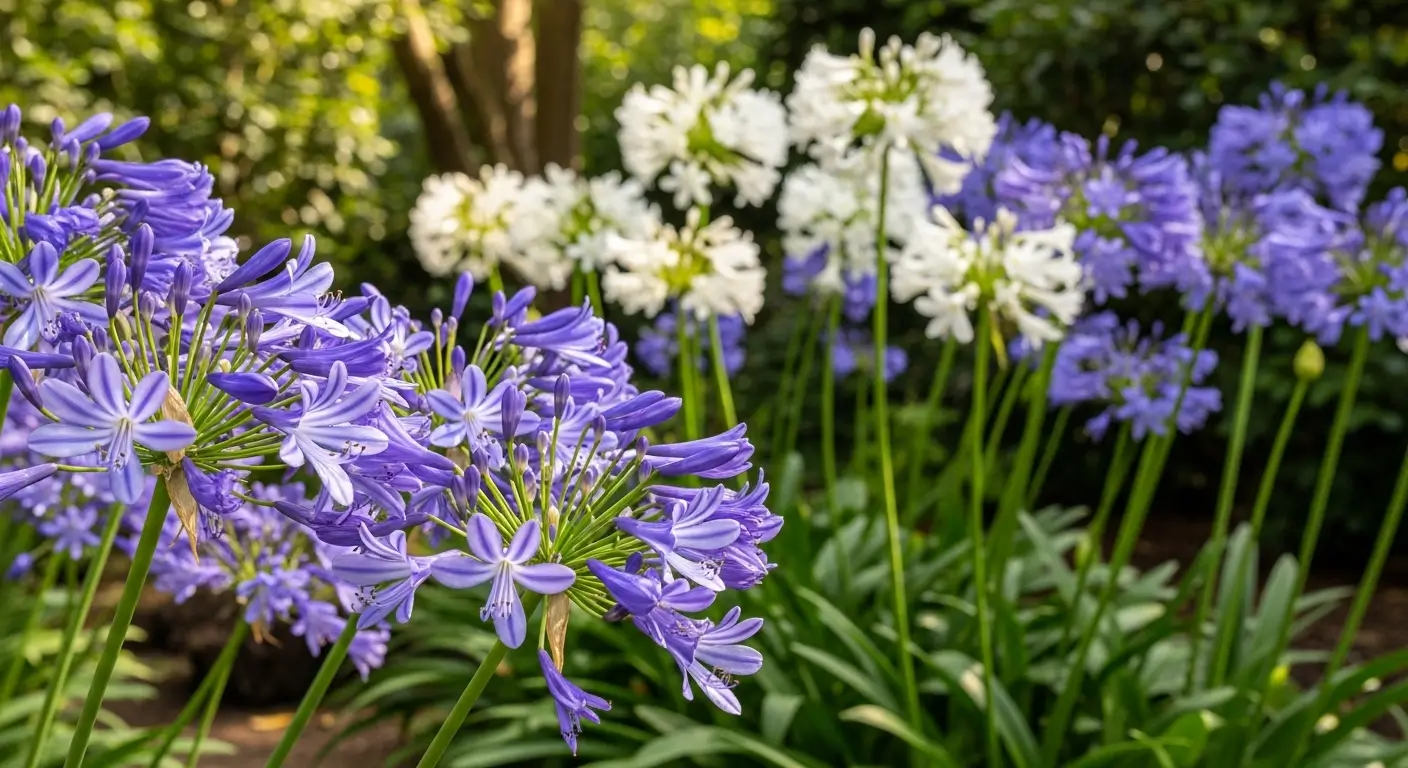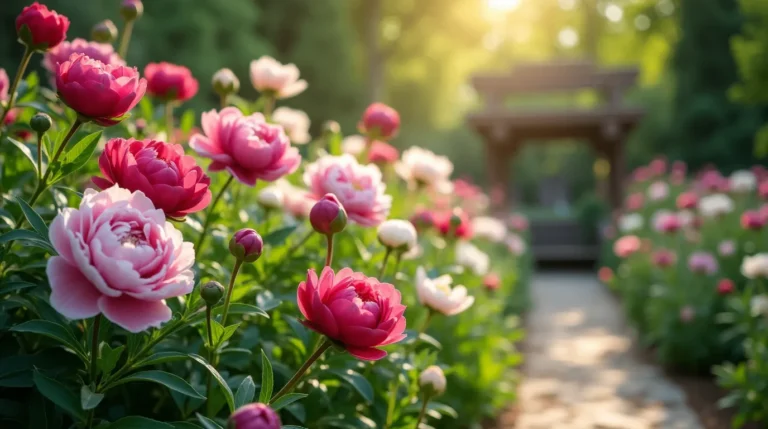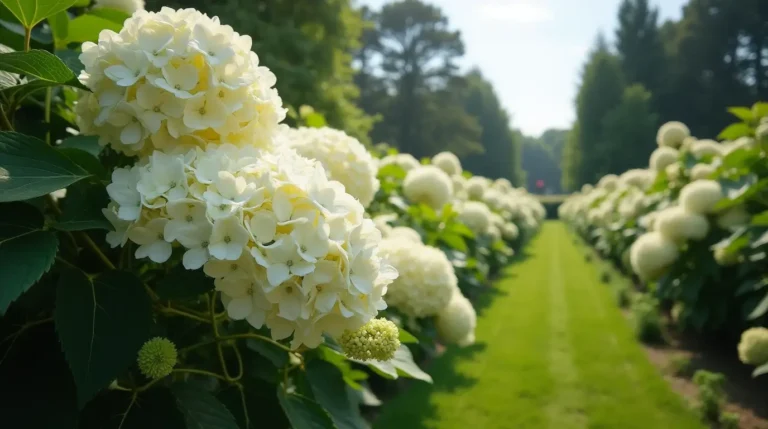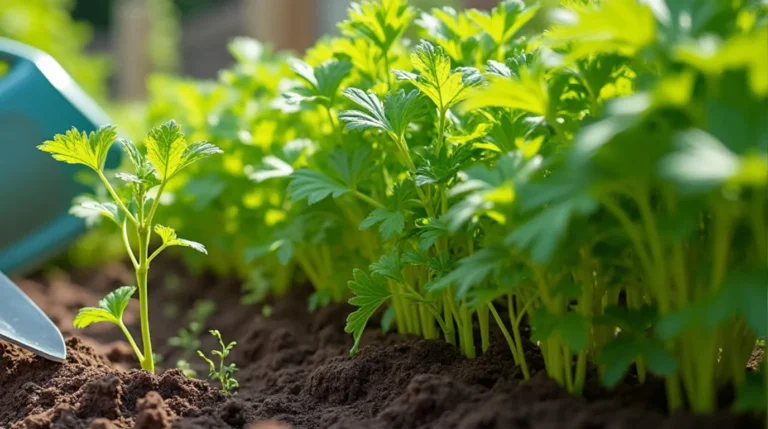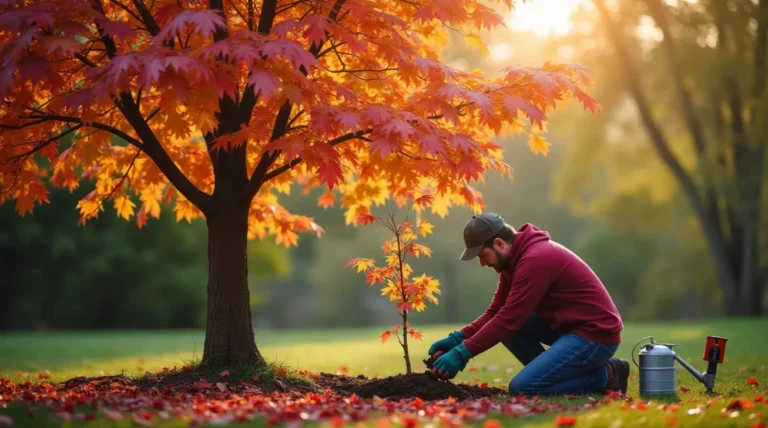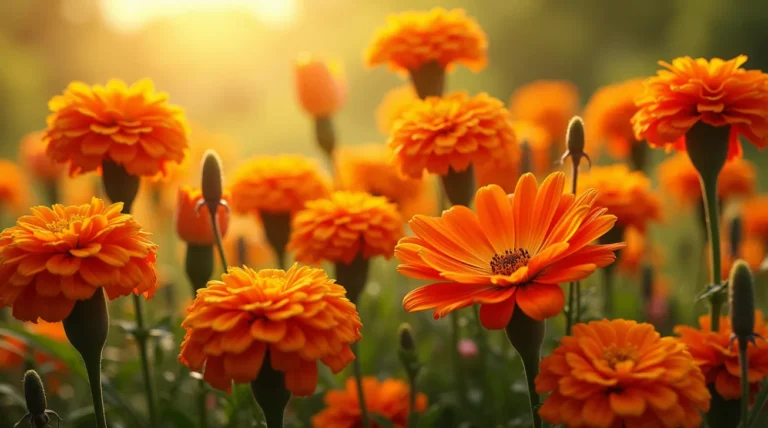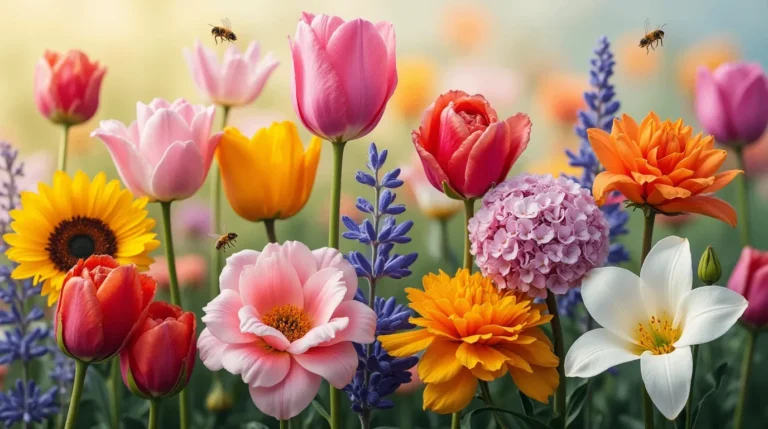Agapanthus Plant Guide: Everything You Need To Know
Discover the beauty of Agapanthus plants, known for their stunning blue or white flowers that bloom in the summer. These plants are a popular choice for gardeners in the United States, and with the right care, they can thrive in various environments.

To keep your Agapanthus healthy and flourishing, it’s essential to understand its specific needs. In this comprehensive guide, we will cover the basics of agapanthus care, including planting, watering, and maintenance tips.
Key Takeaways
- Learn how to plant Agapanthus in the right location
- Understand the watering needs of Agapanthus plants
- Discover maintenance tips to keep your Agapanthus healthy
- Explore the different varieties of Agapanthus
- Find out how to protect your Agapanthus from pests and diseases
What Are Agapanthus Plants?
Originating from Southern Africa, Agapanthus has become a popular choice for gardeners globally. These plants are cherished for their beautiful flowers and robust foliage.
Origin and Natural Habitat
Agapanthus plants are native to Southern Africa, where they thrive in various habitats, from rocky outcrops to grasslands. Their natural habitat has adapted them to withstand drought and tolerate a range of soil conditions.
Botanical Characteristics
Agapanthus is characterized by its strap-like leaves and spherical flower heads. The flowers come in various shades of blue and white, with some varieties featuring purple or bi-colored blooms. These botanical characteristics make Agapanthus a unique addition to any garden.

Why Gardeners Love Agapanthus
Gardeners love Agapanthus for their low maintenance requirements and striking floral displays. They are ideal for adding a dramatic touch to borders, containers, or cut flower arrangements. With various Agapanthus varieties available, gardeners can choose the ones that best suit their garden style and climate.
Popular Agapanthus Varieties
From deciduous to evergreen types, Agapanthus varieties offer something for every gardener. Whether you’re looking to add a dramatic flair to your garden or seeking a low-maintenance plant for your pots, there’s an Agapanthus cultivar to suit your needs.
Deciduous Varieties
Deciduous Agapanthus varieties are known for their vibrant summer blooms and dormant winter periods. These plants typically grow taller than their evergreen counterparts and can be a stunning addition to garden borders.
Some popular deciduous varieties include ‘Peter Pan’ and ‘Mooreamus’. They are ideal for gardeners who enjoy seasonal changes in their garden landscape.
Evergreen Varieties
Evergreen Agapanthus retain their foliage year-round, providing a constant element of greenery in the garden. They are often preferred for their ability to maintain structure and interest even when not in bloom.
Examples of evergreen varieties include ‘Headbourne Hybrids’ and ‘Treborth’. These are perfect for creating a lush, tropical look in your garden or containers.

Dwarf Cultivars for Small Spaces
For gardeners with limited space, dwarf Agapanthus cultivars are an excellent choice. These compact plants still produce the characteristic blue or white flowers but on a smaller scale.
| Variety | Height | Flower Color |
|---|---|---|
| Peter Pan | 60-80 cm | Blue |
| Treborth | 80-100 cm | White |
| Dwarf Baby Blue | 30-50 cm | Blue |
Agapanthus in pots can be just as stunning as those planted directly in the ground. Dwarf cultivars are particularly well-suited for container gardening, allowing for a beautiful display on patios or balconies.
Planting Agapanthus Successfully
The key to a stunning Agapanthus display lies in the initial planting process. Whether you’re a seasoned gardener or a beginner, understanding the specific needs of Agapanthus plants is crucial for their success.
Best Time to Plant
Agapanthus bulbs thrive when planted in the spring or early fall. These periods offer mild temperatures and adequate moisture, ideal conditions for establishing a strong root system before the extreme temperatures of summer or winter. Planting at the right time ensures that your Agapanthus gets off to a healthy start.
Ideal Soil Conditions
Agapanthus prefers well-draining soil rich in organic matter. To achieve this, mix in compost or well-rotted manure to improve soil fertility and drainage. The ideal soil pH for Agapanthus is slightly acidic to neutral, ranging from 6.0 to 7.0. Ensuring the right soil conditions will promote healthy growth and flowering.

Spacing and Depth Guidelines
When planting Agapanthus, space the rhizomes 12 to 18 inches apart to allow for proper air circulation and growth. Plant the rhizomes 2 to 3 inches deep, with the “eyes” or growing points facing upwards. Proper spacing and depth are critical for preventing overcrowding and ensuring the plants receive adequate nutrients.
Planting in Containers vs. Ground
Agapanthus can thrive both in containers and directly in the ground. Containers offer the advantage of mobility, allowing you to move the plants to different locations or bring them indoors during harsh weather. However, plants in the ground can develop a more extensive root system. Choose the method that best suits your gardening needs and preferences.
By following these guidelines, you’ll be well on your way to successfully planting Agapanthus and enjoying their beautiful blooms for years to come.
Essential Agapanthus Care Requirements
Caring for Agapanthus involves providing the right conditions for optimal growth. To ensure these plants thrive, it’s crucial to understand their specific needs regarding sunlight, watering, fertilizing, and mulching.
Sunlight Needs
Agapanthus plants generally require full sun to partial shade. For optimal blooming, they need at least 6 hours of direct sunlight per day. In hotter climates, some afternoon shade can help prevent scorching.

Watering Schedule
Agapanthus needs regular watering, especially during the growing season. The soil should be kept moist but not waterlogged. A good rule of thumb is to water deeply once or twice a week, depending on weather conditions.
Fertilizing Tips
Fertilizing Agapanthus in the spring with a balanced, slow-release fertilizer promotes healthy growth and blooming. It’s also beneficial to add organic matter like compost to improve soil fertility.
Mulching Benefits
Mulching around Agapanthus plants helps retain soil moisture, suppress weeds, and regulate soil temperature. Organic mulches like bark chips or straw are effective and can also add to the garden’s aesthetic appeal.
| Care Aspect | Recommendation | Benefits |
|---|---|---|
| Sunlight | Full sun to partial shade | Promotes blooming, prevents scorching |
| Watering | Regular, deep watering | Keeps soil moist, supports growth |
| Fertilizing | Balanced, slow-release fertilizer | Enhances growth, promotes blooming |
| Mulching | Organic mulches like bark chips | Retains moisture, suppresses weeds |
Growing Agapanthus in Pots
Growing Agapanthus in pots can be a rewarding experience, offering flexibility and beauty to any garden or indoor space. This method of gardening is particularly beneficial for those with limited space or for those who wish to control the soil conditions more effectively.
Choosing the Right Container
When selecting a container for Agapanthus, it’s crucial to choose one that is well-draining and sufficiently large. A pot that is at least 12-18 inches deep is recommended to accommodate the plant’s root system. Terracotta pots are a popular choice because they are breathable and can help prevent waterlogged soil.
| Container Material | Drainage | Aesthetics |
|---|---|---|
| Terracotta | Excellent | Natural, earthy look |
| Plastic | Good | Variety of colors |
| Ceramic | Good | Decorative, glazed finish |
Special Care for Potted Plants
Potted Agapanthus require regular care, including watering, fertilizing, and repotting as necessary. It’s essential to water thoroughly, but allow the soil to dry slightly between waterings to prevent root rot.

Overwintering Container Plants
In colder climates, Agapanthus in pots need protection during the winter months. This can be achieved by moving the pots to a sheltered location or insulating them with mulch or straw. For areas with harsh winters, consider bringing the pots under cover or in a greenhouse to protect the plants from freezing temperatures.
Understanding Agapanthus Bulbs and Rhizomes
Understanding the underground components of Agapanthus, such as bulbs and rhizomes, is key to successful cultivation. These structures are vital for the plant’s survival, growth, and propagation.
Structure and Growth Patterns
Agapanthus plants develop from bulbs or rhizomes, which are underground storage organs that hold nutrients and water. These structures enable the plants to survive adverse conditions and regenerate when favorable. The growth pattern of Agapanthus bulbs and rhizomes is crucial for understanding how to care for these plants.
Storing Dormant Bulbs
When Agapanthus bulbs go dormant, typically during the winter months, it’s essential to store them properly to prevent rot and ensure their viability for the next growing season. This involves drying the bulbs slightly, storing them in a cool, dark place, and checking periodically for signs of decay.
Dividing Overcrowded Rhizomes
Over time, Agapanthus rhizomes can become overcrowded, leading to reduced flowering and plant vigor. Dividing these rhizomes is a straightforward process that involves carefully separating the rhizome sections, ensuring each section has at least one growing point, and replanting them in well-draining soil. This not only rejuvenates the plants but also provides an opportunity to propagate new Agapanthus.
Propagating Agapanthus Plants
Propagating Agapanthus plants is a straightforward process that allows gardeners to multiply their favorite varieties. This process can be achieved through two primary methods: division and growing from seeds. Understanding these methods and the best time to propagate is crucial for successful Agapanthus cultivation.
Division Method
The division method involves separating established Agapanthus clumps into smaller sections, each containing a portion of the rhizome and some foliage. To do this, carefully dig up the entire clump, taking care not to damage the rhizome. Then, gently separate the rhizome into sections, ensuring each section has at least one growing point. Replant these sections immediately, spacing them appropriately to allow for future growth.
Growing from Seeds
Growing Agapanthus from seeds is another viable method, although it may not produce plants that are true to the variety. Sow seeds in a seed tray or pots filled with a well-draining seed mix. Keep the soil consistently moist and warm until germination occurs. Once seedlings are large enough, transplant them into individual pots or directly into the garden, providing adequate care for establishment.
Best Time for Propagation
The best time to propagate Agapanthus depends on the method chosen. For division, spring or early summer is ideal, as this allows the newly planted sections to establish themselves before the next winter. For seed propagation, sow seeds in late winter or early spring. Avoid propagating in extreme weather conditions to ensure the highest success rate.
| Propagation Method | Best Time | Key Considerations |
|---|---|---|
| Division | Spring or Early Summer | Ensure each section has a growing point |
| Seeds | Late Winter or Early Spring | Maintain consistent moisture and warmth |
Pruning and Deadheading Agapanthus
Proper pruning and deadheading are essential for maintaining the health and appearance of Agapanthus plants. These practices not only enhance the plant’s aesthetic appeal but also promote healthy growth and flowering.
When to Deadhead Spent Flowers
Deadheading spent flowers is a crucial step in Agapanthus care. By removing faded blooms, you encourage the plant to focus its energy on re-growing and storing energy for the next flowering season. It’s best to deadhead as soon as the flowers begin to fade.
Cutting Back Foliage
After the flowering season, cutting back the foliage can help maintain the plant’s appearance and promote new growth. However, it’s essential to leave some foliage intact to allow the plant to photosynthesize and store energy for the next year.
Pruning Tools and Techniques
Using the right tools and techniques is vital for effective pruning. Clean, sharp tools help prevent spreading diseases and make clean cuts that heal quickly. For Agapanthus, garden shears or loppers are typically used.
| Pruning Tool | Use | Tip |
|---|---|---|
| Garden Shears | Cutting back foliage and deadheading | Use for precise cuts on smaller stems |
| Loppers | Cutting thicker stems | Ideal for larger Agapanthus plants |
Troubleshooting Common Agapanthus Problems
To keep Agapanthus thriving, it’s essential to identify and solve common problems that may arise. Agapanthus plants are generally robust, but they can be susceptible to certain pests and diseases, and sometimes they may fail to bloom.
Pest Management
Agapanthus plants can be affected by various pests, including snails, slugs, and aphids. Consistently check your plants and keep the garden clean to reduce the risk of pest infestations.
- Apply organic or chemical treatments when necessary to control pest activity.
- Encourage beneficial insects that prey on Agapanthus pests.
- Keep the area around your Agapanthus plants free of debris and weeds.
Disease Prevention and Treatment
Diseases such as root rot and leaf spot can affect Agapanthus. Promote healthy growth by ensuring proper air circulation and avoiding excess watering.
- Inspect plants regularly for signs of disease.
- Use fungicides if necessary to treat infected plants.
- Remove and discard any diseased leaves or stems to stop infections from spreading.
Why Agapanthus Might Not Bloom
If your Agapanthus is not blooming, several factors could be at play. These include insufficient sunlight, improper fertilization, or dividing the plants too frequently.
- Ensure your Agapanthus receives adequate sunlight.
- Fertilize appropriately, avoiding high-nitrogen fertilizers that promote foliage at the expense of blooms.
- Allow the plants time to establish themselves before dividing.
By addressing these common issues, you can help ensure your Agapanthus plants remain healthy and continue to bloom beautifully.
Conclusion
Growing agapanthus plants can be a rewarding experience for gardeners of all levels. By understanding the different varieties, planting techniques, and care requirements, you can enjoy these beautiful flowers for years to come.
Agapanthus plants offer a range of benefits, from their striking blooms to their relatively low maintenance needs. Whether you’re planting in containers or directly in the ground, following the guidelines outlined in this article will help you achieve success with your agapanthus.
As you continue to explore the world of gardening, consider experimenting with different companion plants to enhance the beauty of your agapanthus. With proper care and attention, these stunning flowers will remain a highlight of your garden season after season.
FAQ
How often should I water my Agapanthus plants?
Agapanthus plants require regular watering, especially during hot summer months. Water them deeply once or twice a week, depending on weather conditions, to keep the soil consistently moist but not waterlogged.
Can I grow Agapanthus in pots?
Yes, Agapanthus can thrive in pots. Choose a container that is at least 12-18 inches deep to accommodate the plant’s root system, and ensure it has good drainage holes to prevent waterlogged soil.
Why are my Agapanthus leaves turning yellow?
Yellowing leaves on Agapanthus can be due to overwatering, underwatering, or nutrient deficiencies. Check your watering schedule and soil condition, and consider fertilizing your plants to address any potential nutrient deficiencies.
How do I propagate Agapanthus?
Agapanthus can be propagated through division or seed. Division is typically done in the spring or fall, while seeds can be sown in the spring. Ensure that each division has a growing point and some roots attached.
When should I prune my Agapanthus plants?
Prune your Agapanthus plants after they finish blooming. Remove spent flowers to encourage the plant to focus energy on re-growing and storing energy for the next blooming season.
Are Agapanthus plants deer-resistant?
Yes, Agapanthus plants are generally considered deer-resistant due to their toxic compounds. However, in areas with high deer pressure, it’s still possible for deer to nibble on the plants if they are hungry enough.
Can I grow Agapanthus in shade?
While Agapanthus can tolerate some shade, they typically require full sun to partial shade to bloom well. In areas with dense shade, Agapanthus may not produce flowers.
How do I overwinter Agapanthus in pots?
To overwinter Agapanthus in pots, bring the pots to a protected location, such as a garage or basement, before the first frost. Reduce watering to once a month, and keep the soil barely moist until the weather warms up in the spring.

